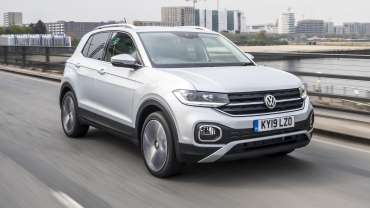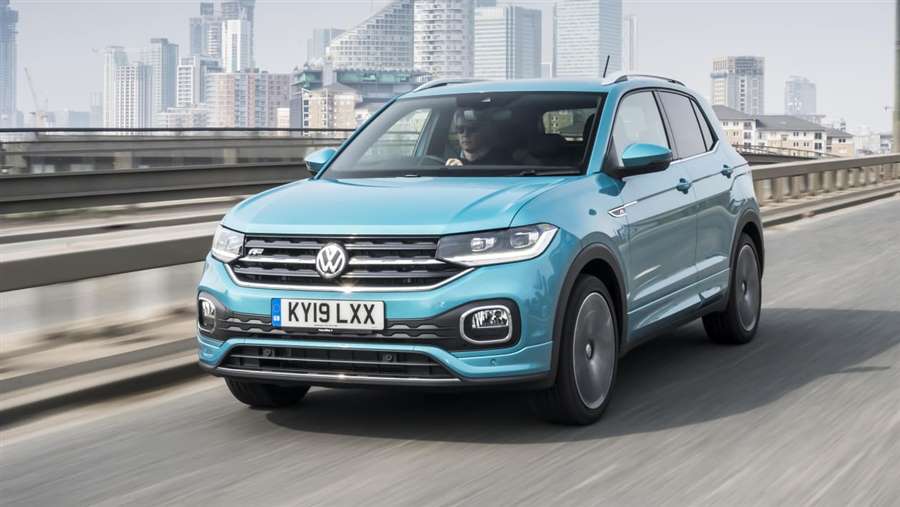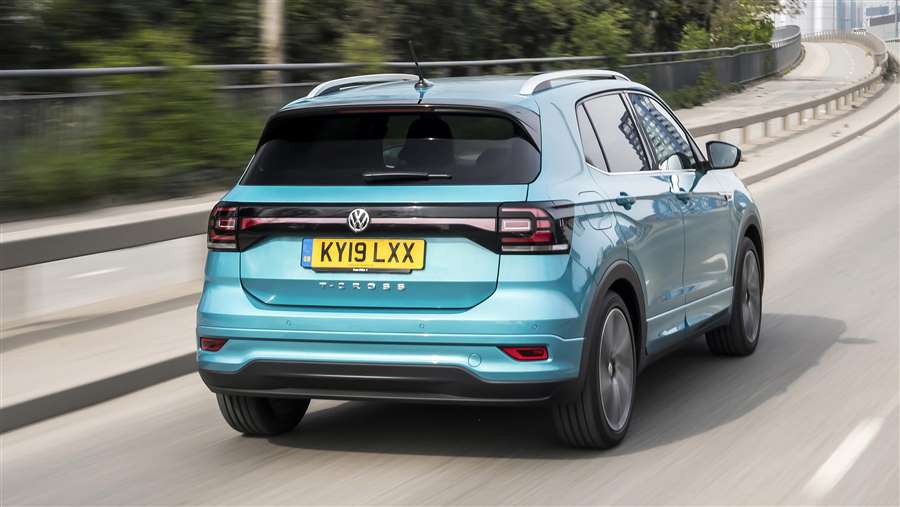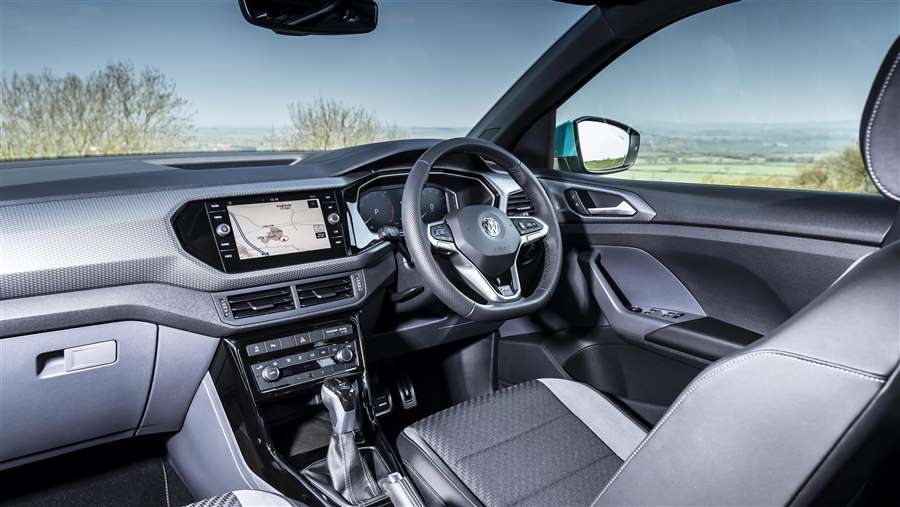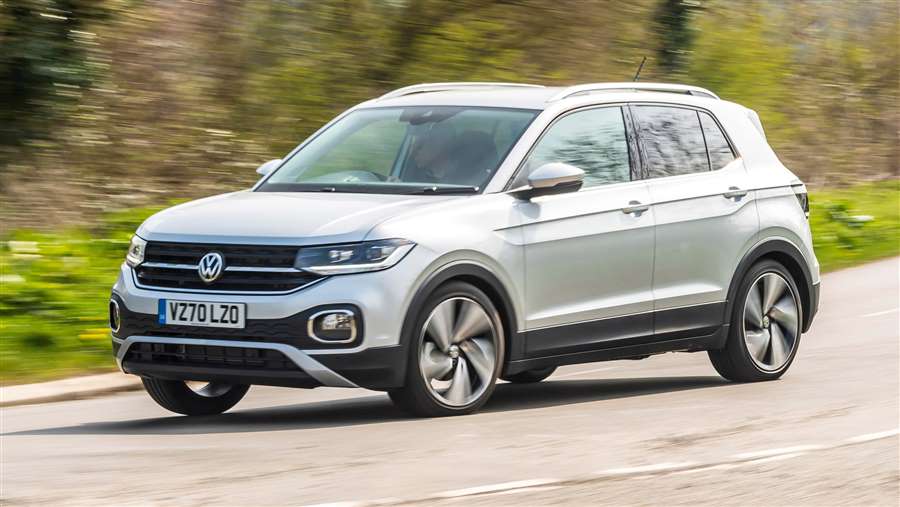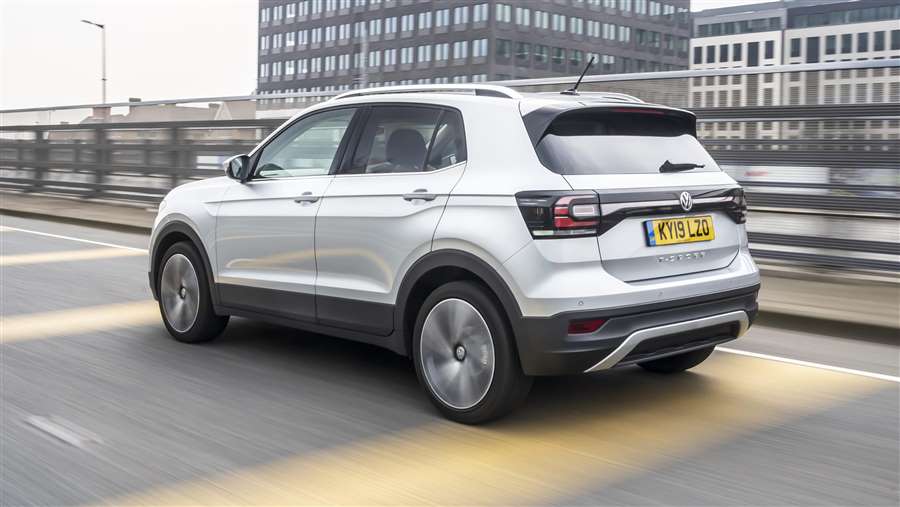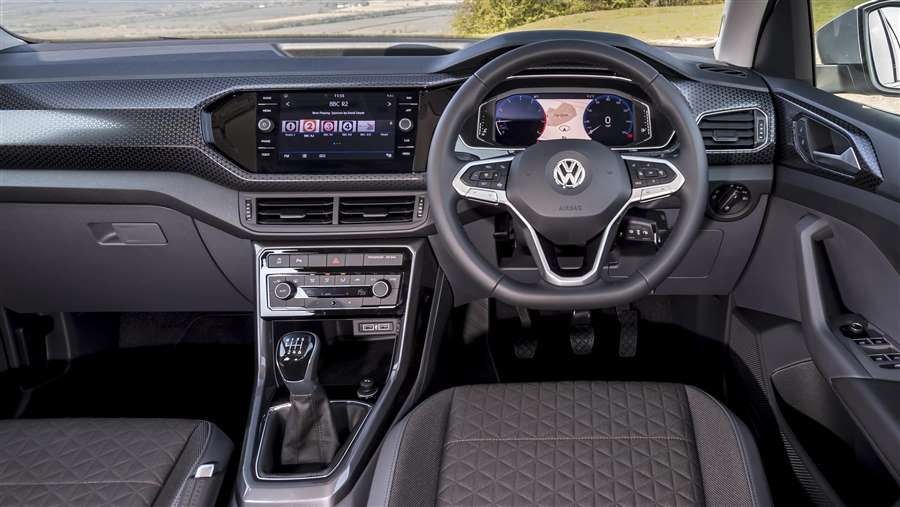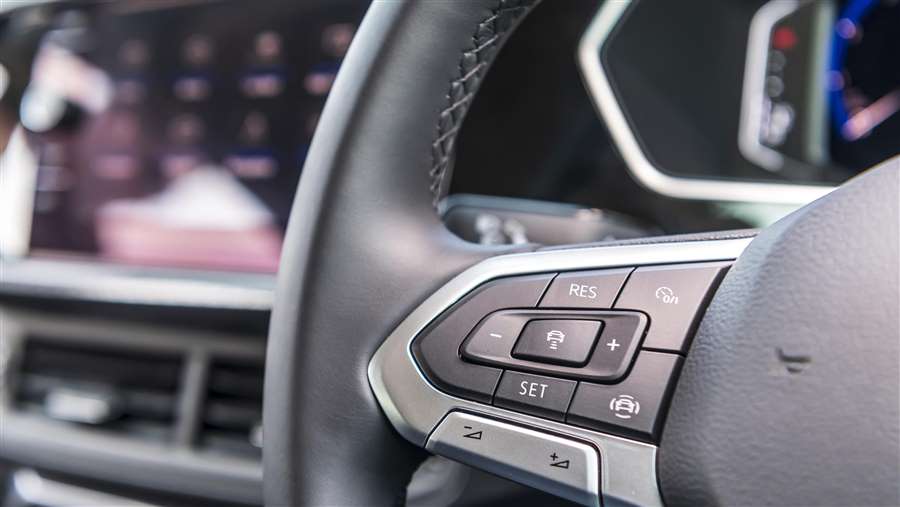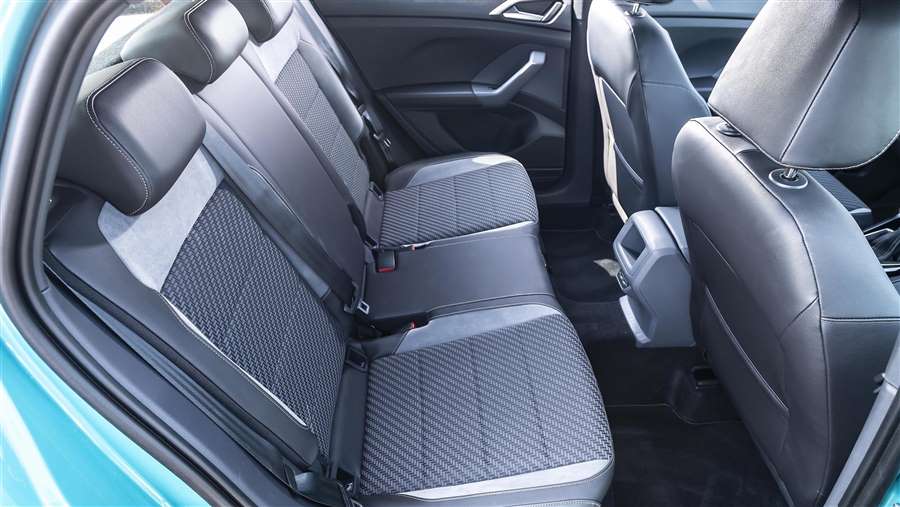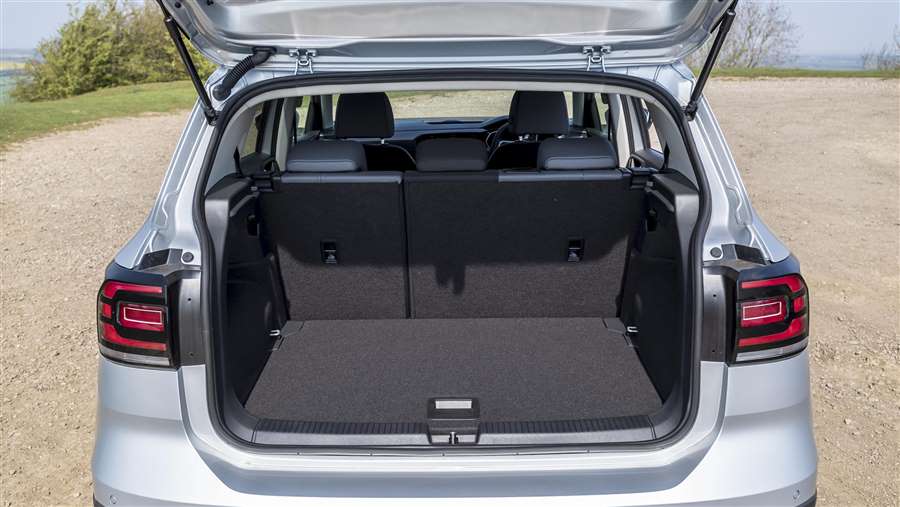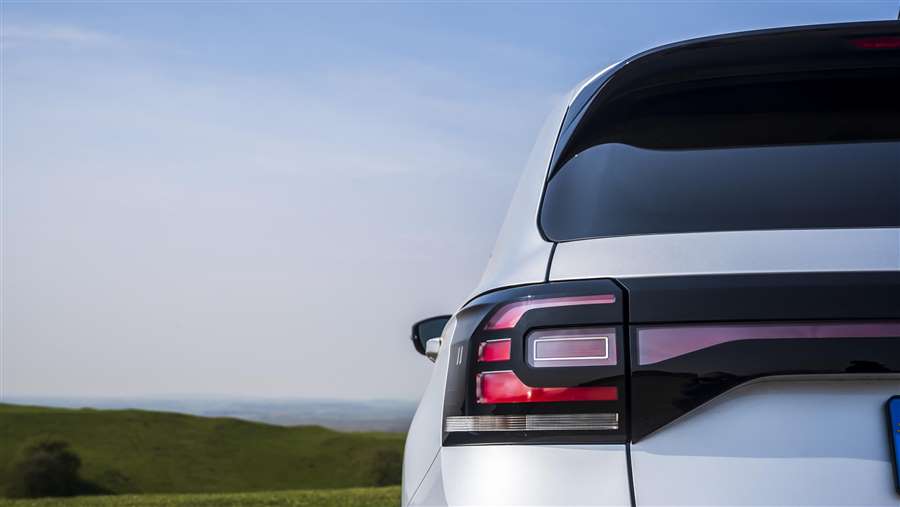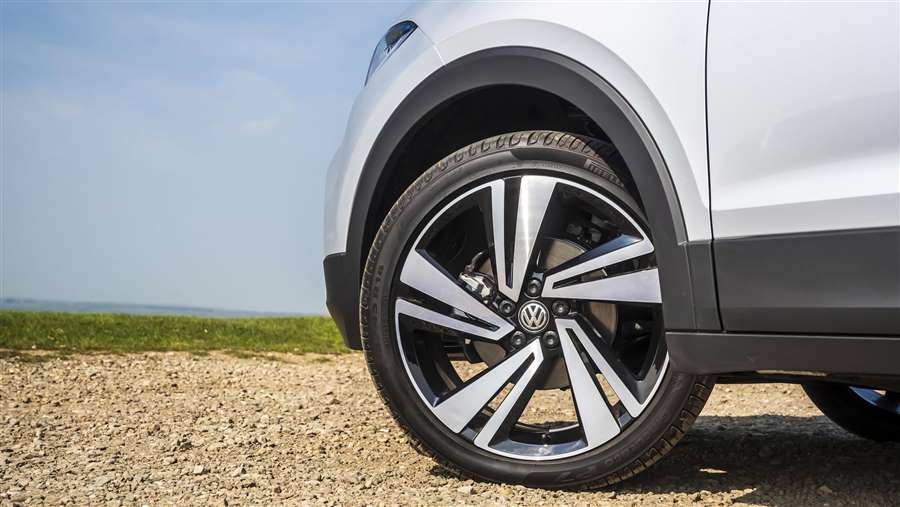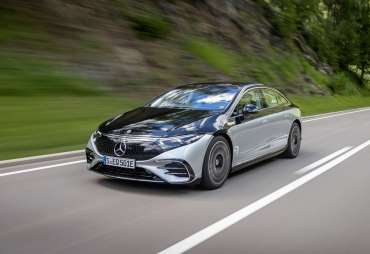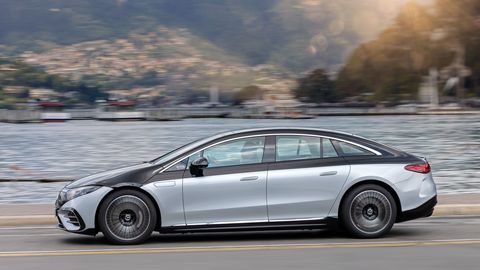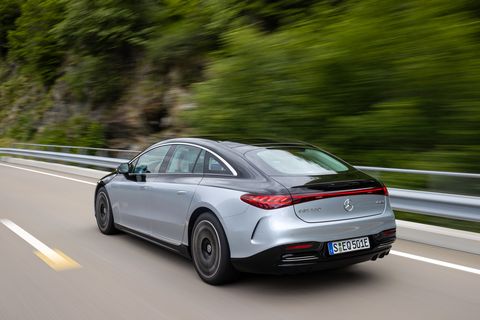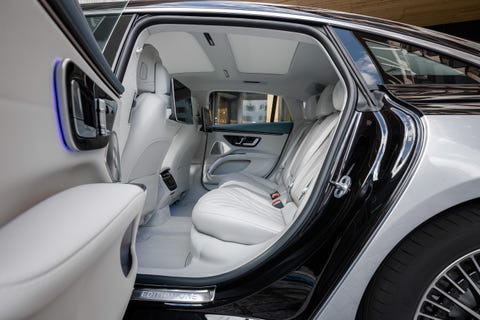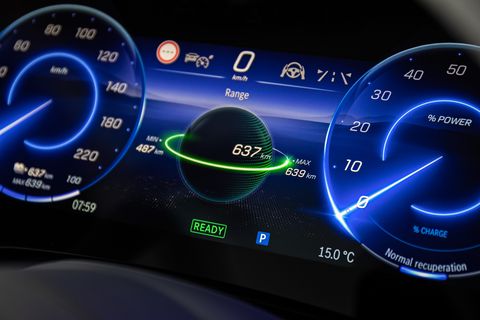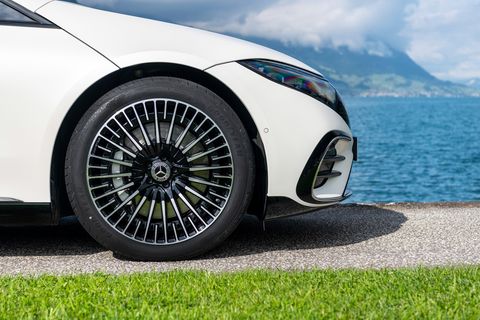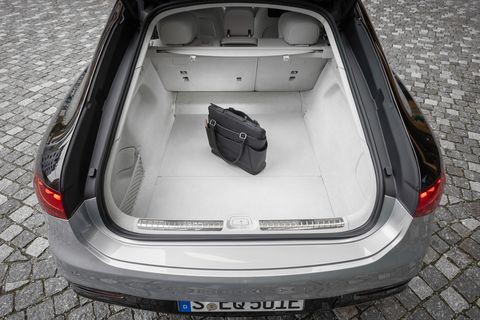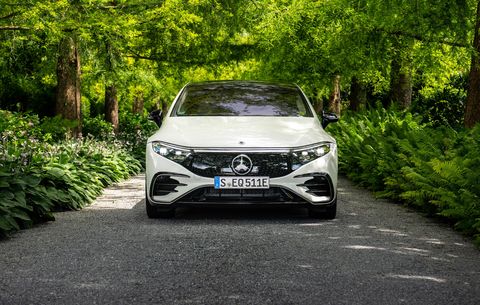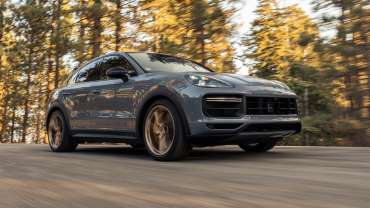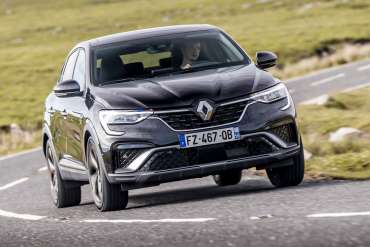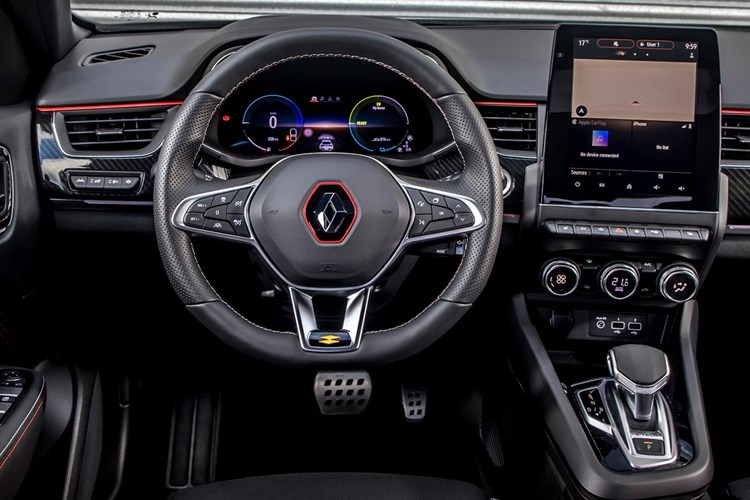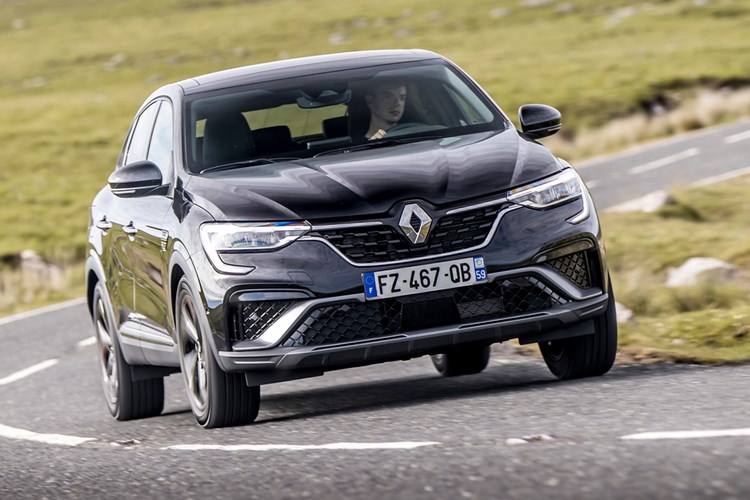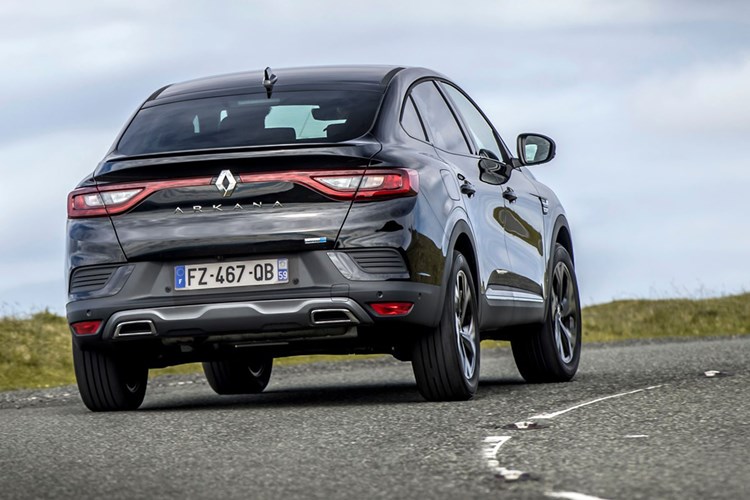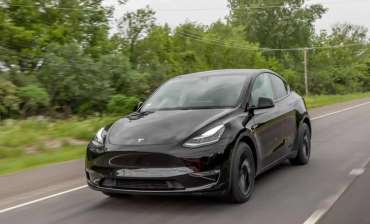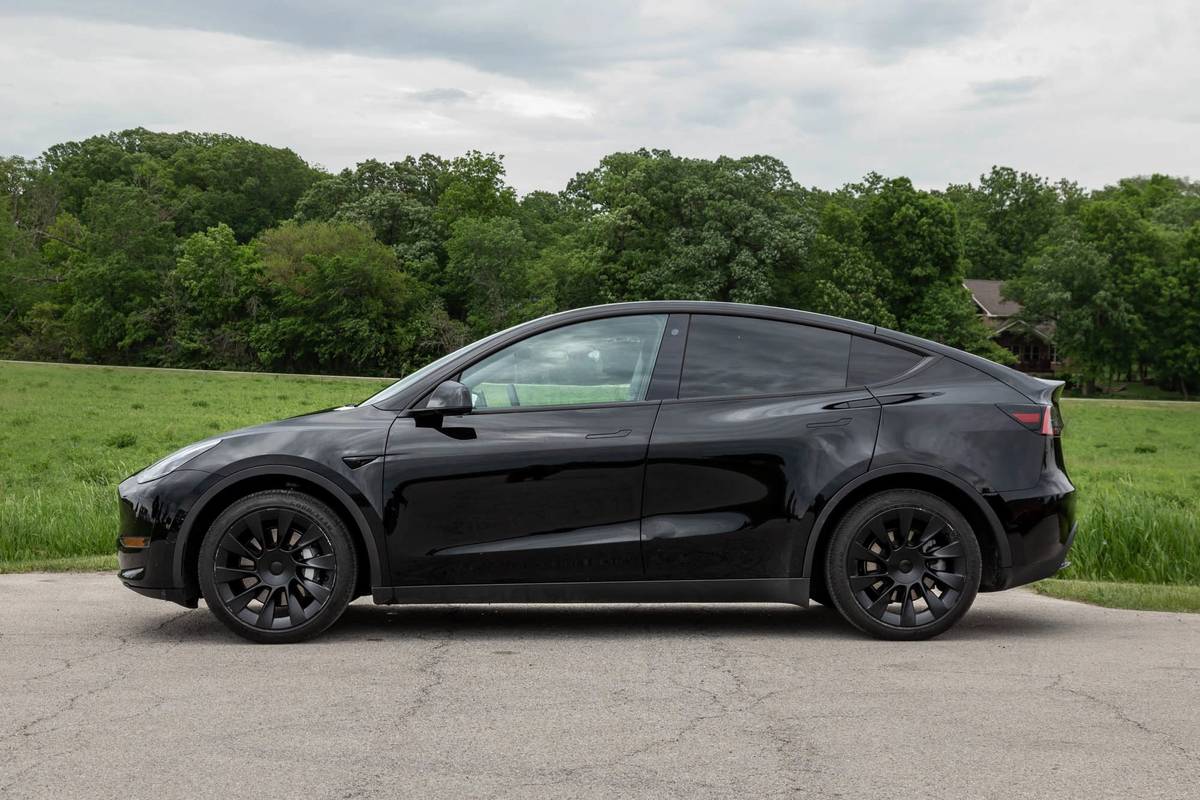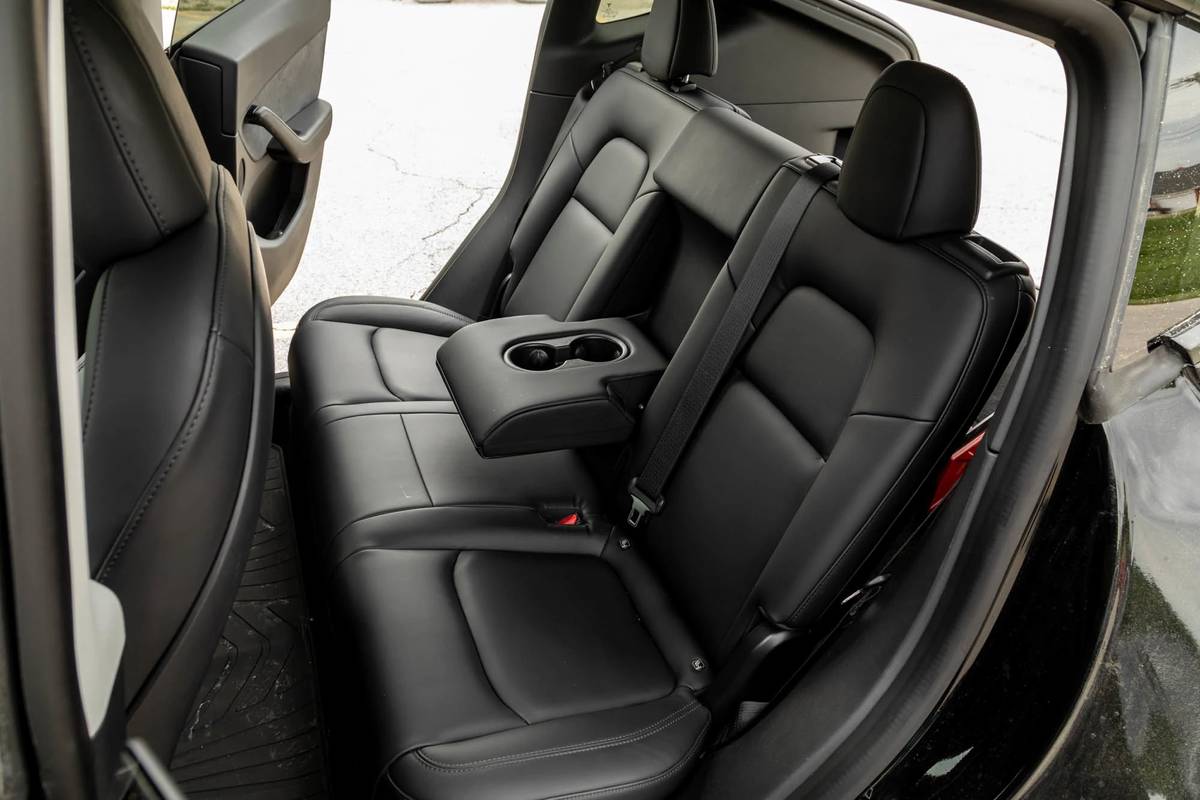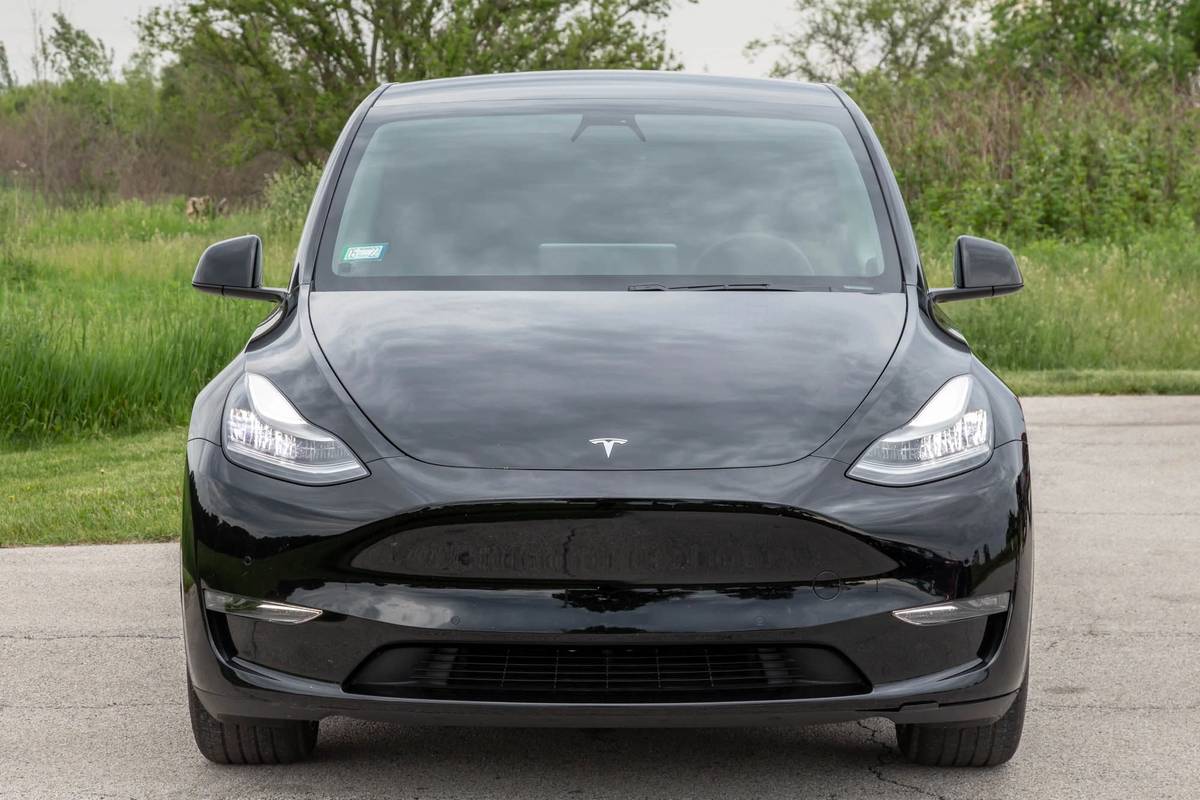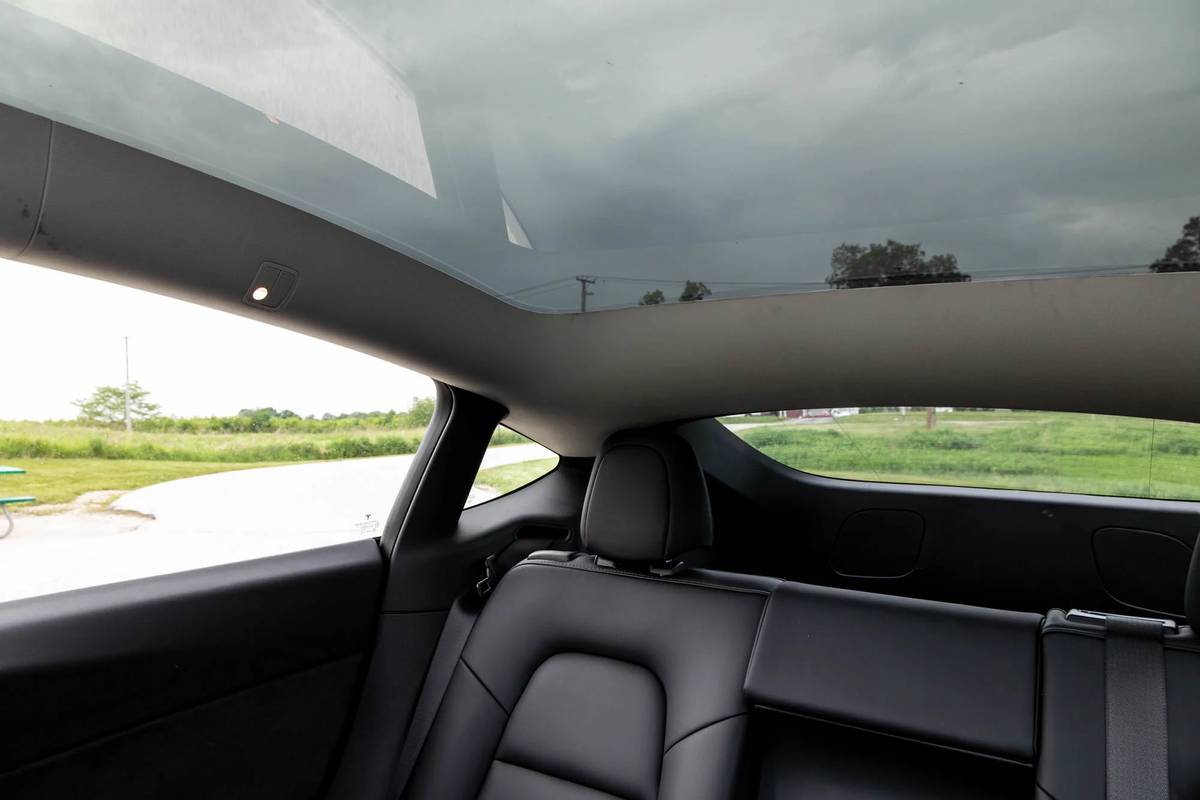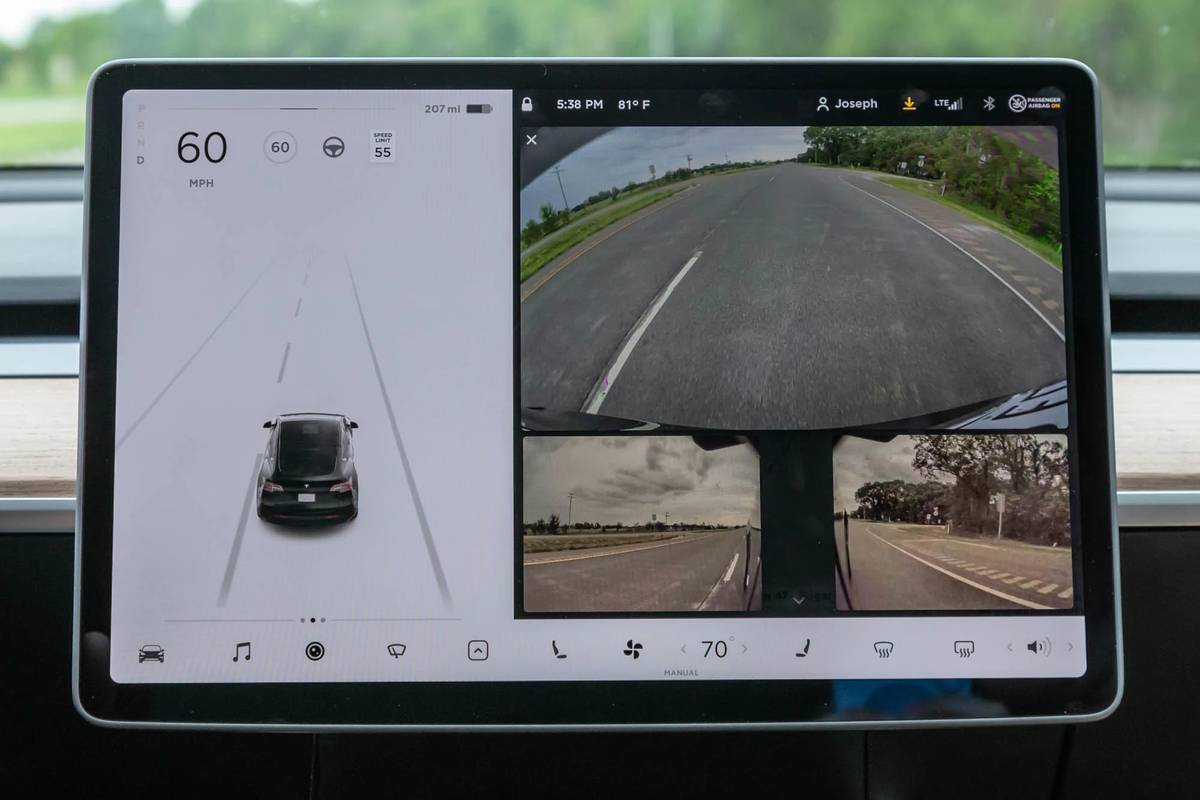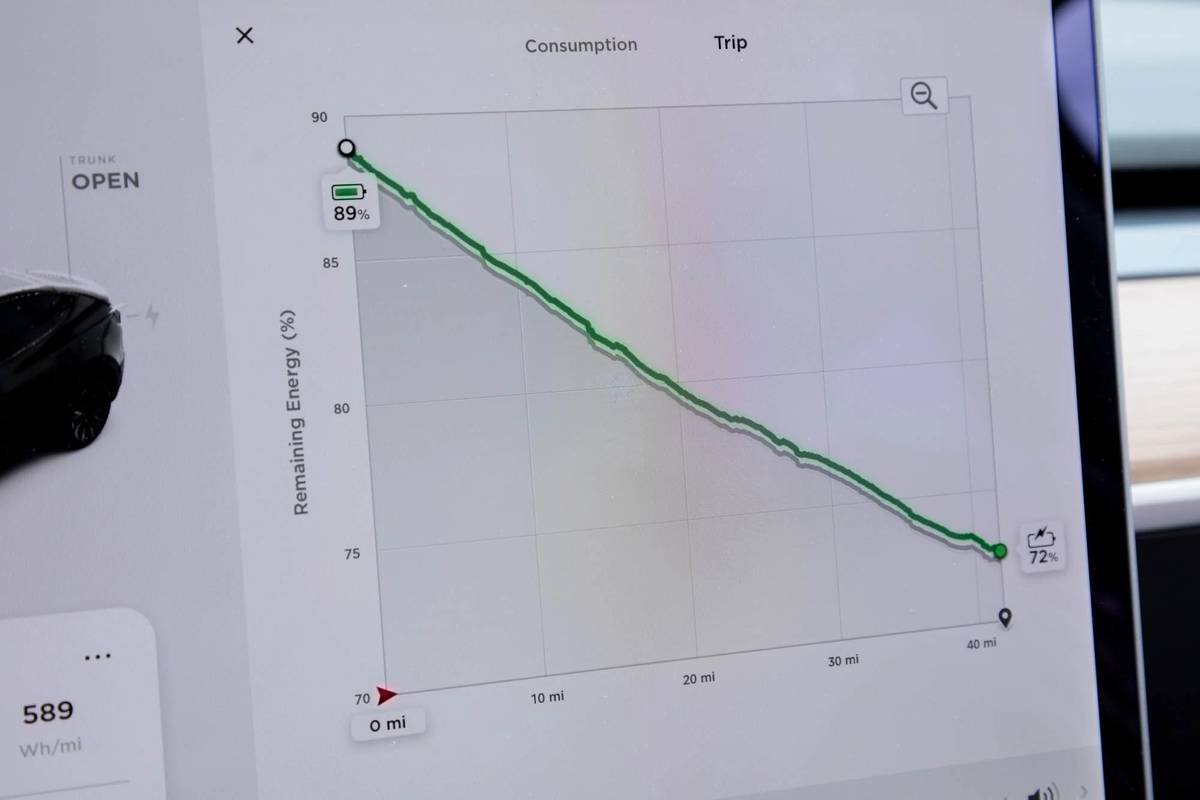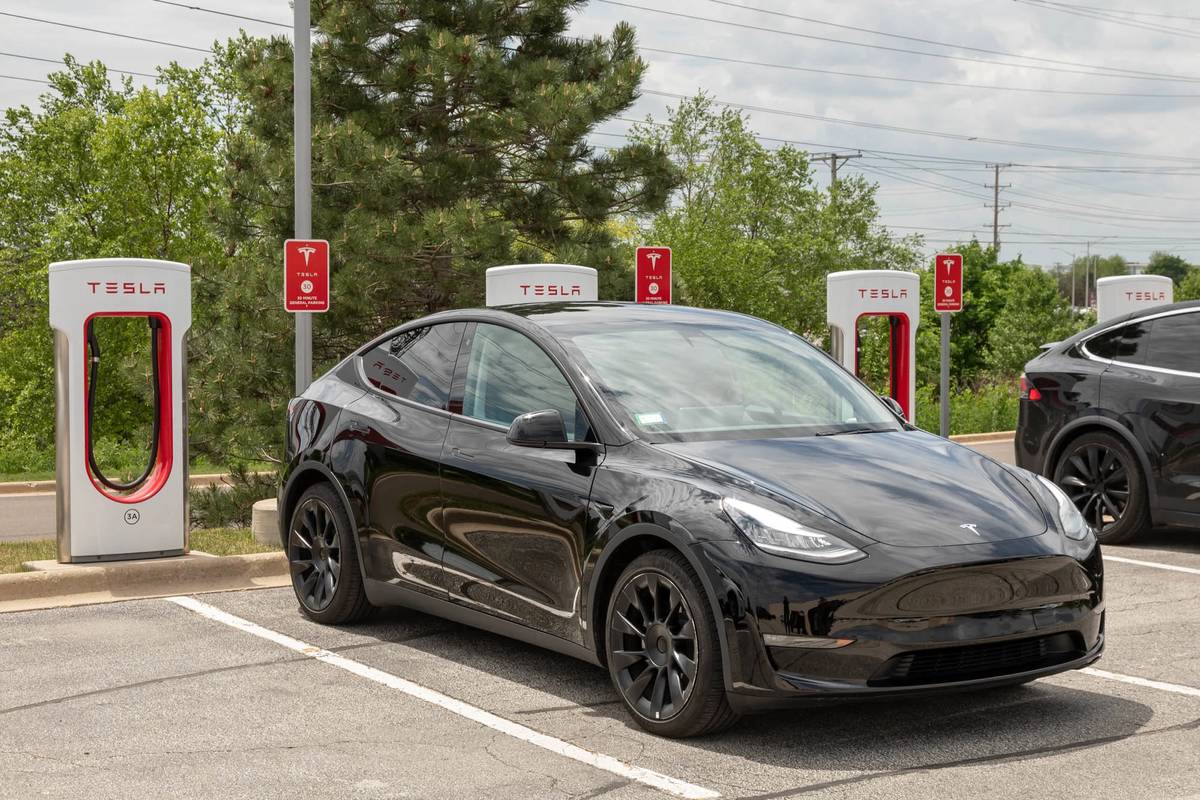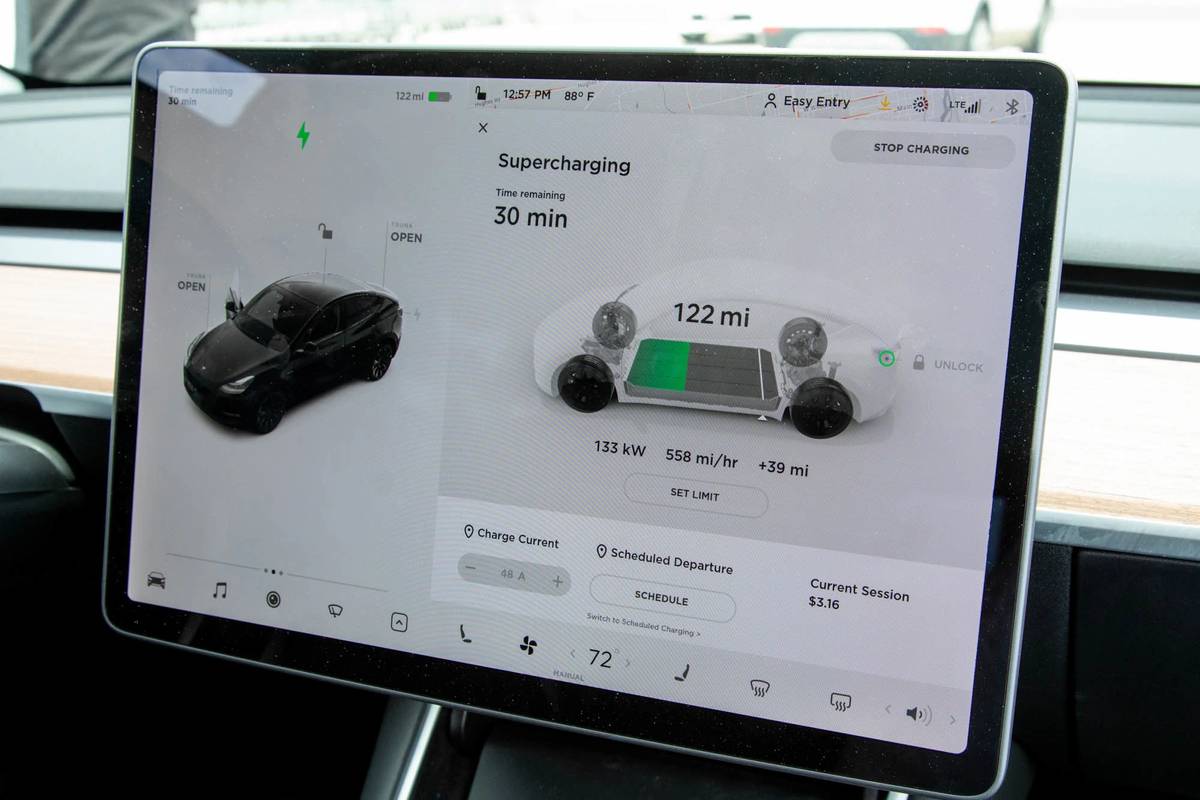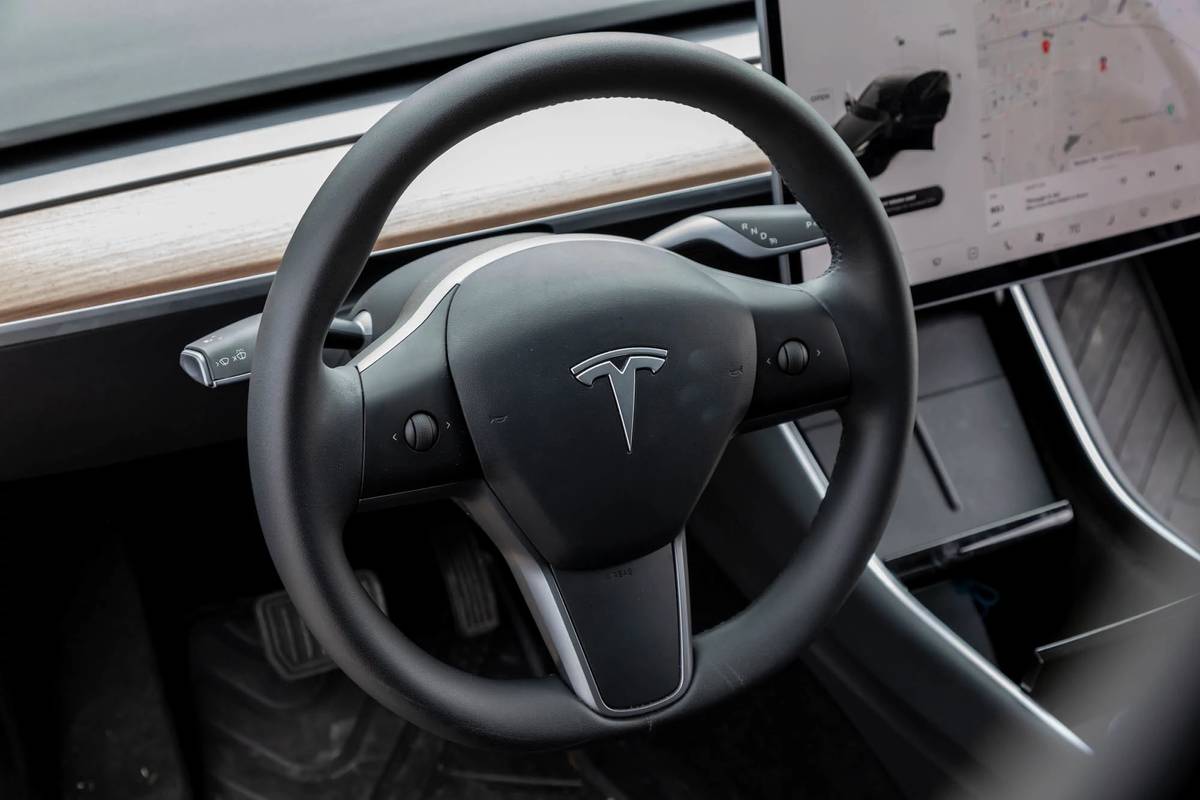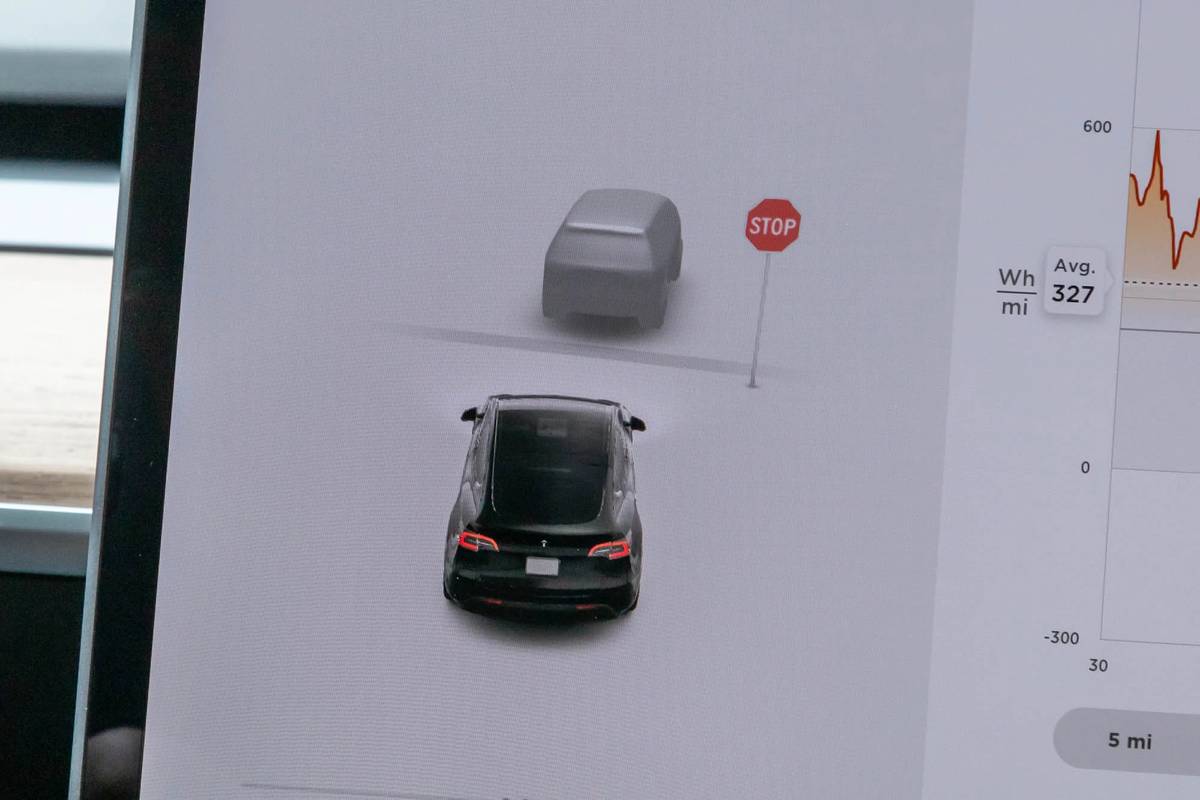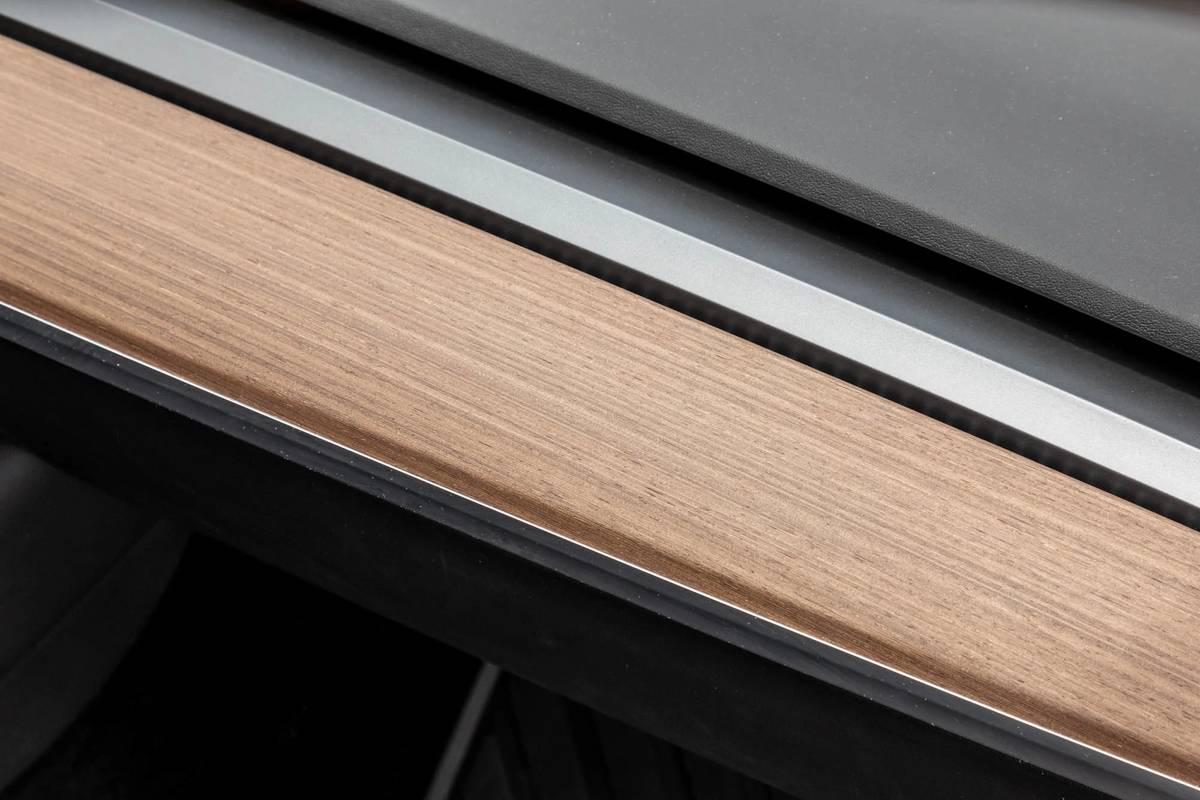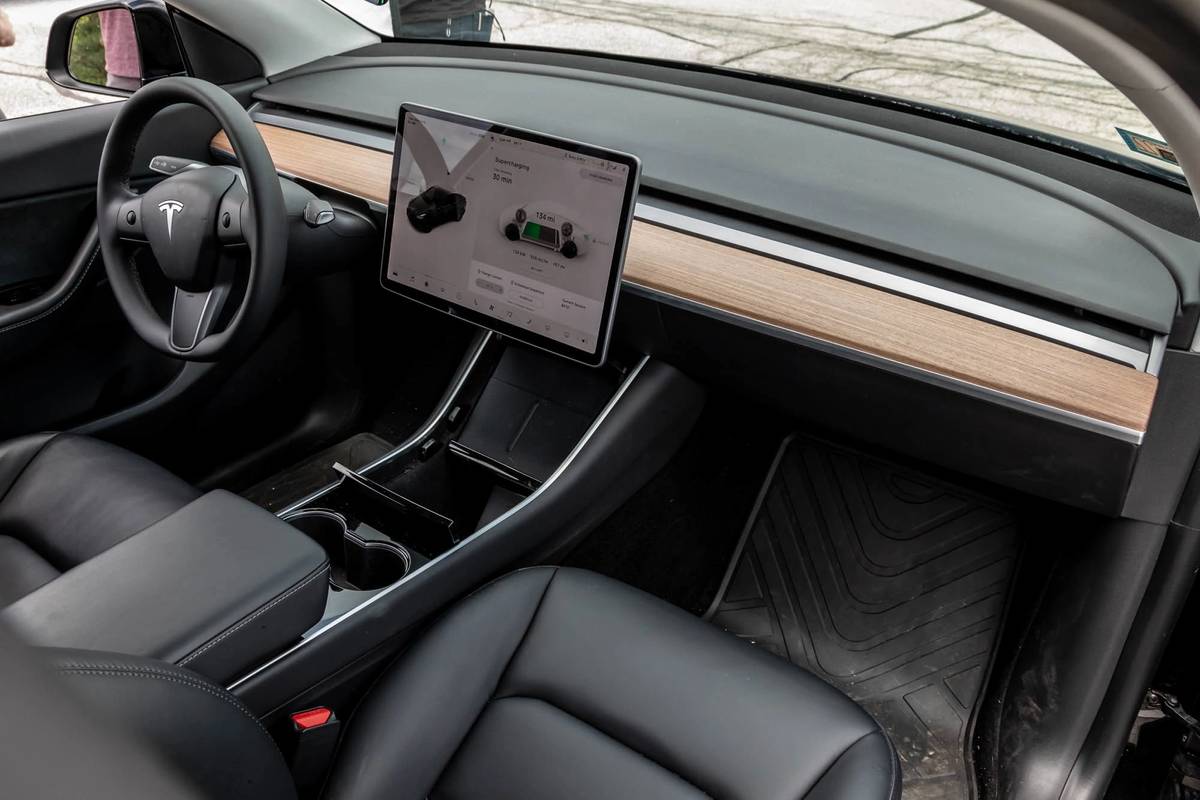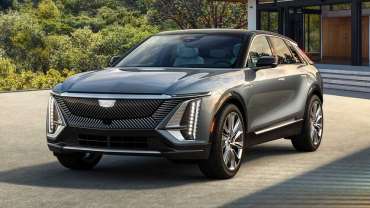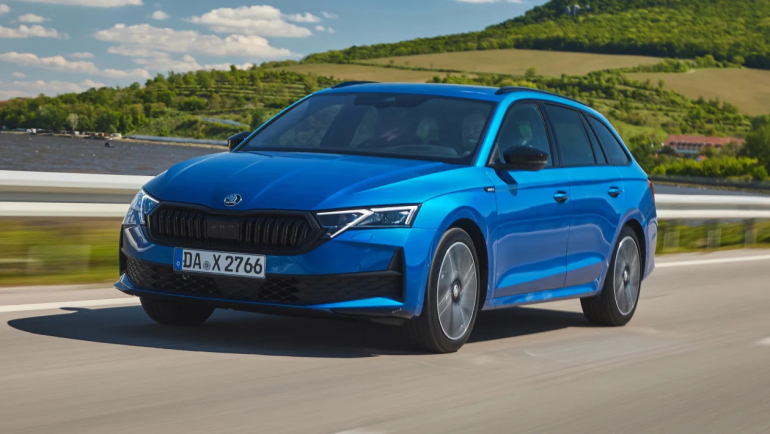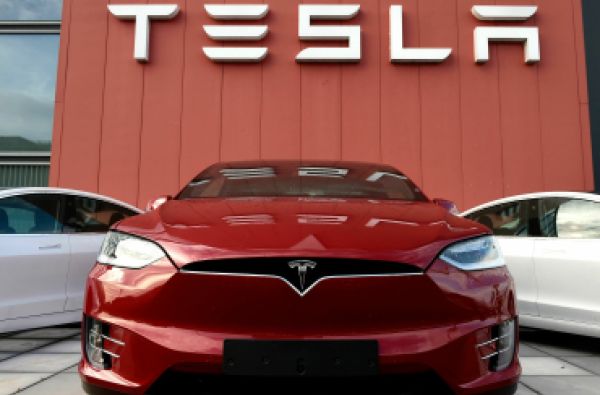When Mercedes-Benz CEO Ola Källenius unveiled the 2022 EQS in April, he described it as a defining moment for the world's oldest carmaker. We're numb to hyperbole when it comes to car launches, but in this case it's hard to argue with the 52-year-old Swede who has wasted little time steering the company deeper into the electric-vehicle market.
Unlike the EQC, EQV, EQA and EQB—all of which are based on existing internal-combustion Mercedes-Benz models—the EQS is a standalone model in its own right. Benz's first dedicated electric-car platform features a newly developed range of drivetrains, a battery promising a range of up to 485 miles under the European test procedure, and arguably the most advanced interior you'll find in any current production car.
Positioned at the top of a growing list of EQ-badged models, it also acts as a technological showcase for the Mercedes-Benz brand, featuring a number of innovations we can also expect to see on upcoming models, including a Lidar-based Level 3 autonomous driving function.
Aesthetically, the EQS is a radical departure from traditional combustion-engine Mercedes-Benz models, with a cab-forward profile similar to that previewed by the EQS Vision concept back in 2019. Distinguishing exterior elements include a black grille, a pair of angular headlamps available with what Mercedes calls Digital Light, which has matrix projectors with 1.3 million pixels in each headlight that can be used to project warning symbols onto the road surface or for some startup theater, and a horizontal light bar across the leading edge of the hood.
For the first time on a Mercedes-Benz production model, the clamshell-style hood is fixed, designed to be opened only during servicing. The filler for the windshield washer is integrated into the driver's side front panel, flipping out when pressed. The steeply raked windshield flows into what Mercedes describes as a one-bow roofline, its arc tracing all the way to the rear decklid. The doors are frameless and feature the same flush handles seen on the latest S-class. Mercedes-Benz claims the EQS betters the Tesla Model S for aerodynamic efficiency, with a record-breaking production-car drag coefficient of 0.20 in base rear-wheel-drive form—in combination with an optional AMG styling package and specially developed low-drag wheels.
Compared to the new S-class, the EQS is slightly shorter and narrower. It rides on a 126.4-inch wheelbase, which is just 0.2 inch shorter than that of its combustion-engine stablemate, giving it relatively short overhangs and a very roomy interior.
The EQS's aluminum-intensive platform supports two drivetrain layouts—either single motor and rear-wheel drive or dual-motor, all-wheel drive. The electric motors, produced by Valeo Siemens eAutomotive, are mounted low within a subframe at the front and within the axle assembly at the rear.
A 396-volt lithium-ion battery, assembled by Mercedes-Benz sister company Accumotive, uses a steel and aluminum casing and is integrated into the floor, giving the EQS a much lower center of gravity than the S-class. The power electronics, meanwhile, are packaged up front under the fixed hood.
Mercedes put a lot of effort into the interior of the EQS, which combines its own unique elements with features from other models in the Benz lineup. The standard setup brings a layout similar in appearance to the latest S-class, with 12.3-inch digital instrument display and a 12.8-inch infotainment screen, in combination with a multifunction steering wheel featuring touch-sensitive controls on the upper spokes.
North American buyers will also be able to opt for the so-called Hyperscreen, a one-piece curved screen that stretches across the width of the dashboard. It houses three digital displays—one for the instruments, one for the infotainment functions, and another ahead of the front passenger seat. It is impressive, no doubt. But the 56.7-inch-wide screen is prone to reflections in sunny conditions, despite the inclusion of a sensor that automatically alters its brightness. It does work with impressive speed, though, thanks to an eight-core processor and 24 gigabytes of RAM. Either display setup is controlled by the latest generation of MBUX—an operating system that supports conversational speech input via a Hey Mercedes prompt. There's also a head-up display with augmented-reality navigation commands.
A high-set center console divides the front seats, which are broad and magnificently comfortable, if a little short on lateral support. They can also be ordered with up to 19 motors and a total of 10 massage programs.
Although Mercedes-Benz says the EQS has a flat floor, there is a slight rise in the middle of the structure to increase stiffness. This is most noticeable from the rear, which can be configured with either a three-passenger bench seat or two individual seats. Rear-seat accommodations are excellent, especially in terms of leg and shoulder room. While the EQS does without a front storage compartment, its 22 cubic feet of trunk space is more than that offered by the latest S-class. Dropping the split-fold rear seats extends cargo capacity to 63 cubic feet.
The EQS launches with two models. The entry-level EQS is the rear-wheel-drive EQS450+, which uses a rear-mounted permanent-magnet electric motor that makes 329 horsepower and 419 pound-feet of torque. We expect the 450+ to accelerate to 60 mph in about six seconds. It has a range of 485 miles under the WLTP test procedure used in Germany. That should equate to roughly 360 miles of range in the United States using the EPA methodology. Its 107.8-kWh battery will be used by all EQS models at launch. A smaller 90.0-kWh battery is also planned for the EQS450+.
The flagship model is the all-wheel-drive EQS580 4Matic, which is the one we drove. It uses two permanent-magnet motors with a combined output of 516 horsepower and 631 pound-feet of torque. The 580 should scoot to 60 mph in about four seconds and have roughly 315 miles of range in the U.S.
Battery charging is via a CCS socket at either 11 kW or 22 kW on Level 2 AC, while its peak DC fast-charging rate tops out at 200 kW. Mercedes-Benz claims a pre-conditioning function and an intelligent cooling strategy allows high current to be maintained for long periods, maximizing charging rates. It also provides a 10-year/155,000-mile guarantee for the battery.
There is a terrific feeling of engineering integrity to the EQS, noticeable from the moment you nudge its heavily sprung throttle and glide off down the road. Step-off is predictably strong, thanks to the generous reserves of torque. The big sedan launches from a standstill with instant response and tremendous energy, gathering pace without any real letup in acceleration until you're well past the speed limit. It also tracks remarkably well, cruising up to and beyond typical highway speeds with exceptional straight-line stability.
There are a range of different energy recuperation programs to choose from, including three manually selectable modes that are engaged via the steering wheel-mounted paddles and an automatic mode called DAuto. The driver can also opt for a gliding function, in which the big sedan rolls for truly impressive distances without any perceptible mechanical drag from the motors. DAuto's set-and-forget qualities make it the preferred option, with the two big electric motors developing combined regen of up to 389 horsepower, according to Mercedes. After a three-hour run through Switzerland, Austria, and Lichtenstein, our test car was still showing more than 250 miles of predicted range.
We're used to the silent qualities of the latest generation of electric cars, but the EQS takes things to a whole new level, proving wonderfully relaxing whether threading through traffic around town or at higher speeds out on the open road. There are a range of synthetic sounds, and buyers can specify an optional sound package, but why disrupt the EQS's inherent tranquility and calmness?
The steering is lightly weighted. Still, there's sufficient tactility to the speed-dependent system to ensure the driver remains involved. It is reminiscent of the S-class in this respect, with very accurate action that allows you to confidently place the EQS on the road. There is a well-engineered delicacy to the steering, making for a relaxed car in everyday driving conditions.
Like the new S-class, the EQS comes with the choice of two rear-wheel steering systems, with the more advanced optional setup providing up to 10 degrees of countersteer, enabling a 35.7-foot turning circle. Below 37 mph, the rear wheels turn in the opposite direction to those up front. Above that, they steer in the same direction. If an EQS buyer who opted for the standard rear-wheel-steer setup later decides to go for the full 10-degree capability, that can be unlocked via an over-the-air update.
So configured, the big electric sedan delivers excellent low-speed maneuverability around town. With a turning radius smaller than the GLA, you can negotiate tight spaces without the need for three-point turns in parking garages and the like. The car also changes direction quite eagerly, feeling much more agile than its substantial curb weight (likely 5800 pounds for the 580) suggests out on the open road.
Body movements are well controlled, the increase in body roll is progressive in proportion to the buildup of lateral forces. The overall balance is excellent, allowing you to generate a good deal of cornering speed before the tires relinquish their grip and the fast-acting stability-control system steps in. The low center of gravity and near 50-50 front-to-rear weight distribution are a boon to handling even though the EQS isn't overtly sporty.
The Airmatic suspension with variable damping control automatically adjusts ride height, providing constant ground clearance in both Eco and Comfort modes. Switching into Sport mode reduces the ride height by 0.8 inches at speeds of more than 80 mph to improve aerodynamic efficiency. The suspension is superbly compliant but does get a bit floaty over undulating roads, which is maybe not surprising given the weight it's asked to control. However, the EQS does a fantastic job of isolating the cabin from poor surfaces such as broken sections of pavement.
The slippery shape leads to very low levels of wind noise. Even more impressive is the way the EQS isolates tire noise. The 265/40R-21 Goodyear Eagle F1s on our test car were whisper quiet on smooth-surfaced roads, further adding to the overall serenity delivered by the near-silent driveline. You'd buy the EQS on the strength of its refinement alone.
Mercedes says that the EQS's electronically controlled all-wheel-drive system apportions power faster than any of the company's existing electromechanical setups. A torque-vectoring function also individually channels power to each of the rear wheels dependent on prevailing traction and wheel speed. The EQS isn't built for tail-out antics, but it is happy to launch itself from slow corners with utmost composure under full throttle.
Brake pedal feel is good. The pedal action is progressive, with a consistent bite point, allowing you to scrub speed with confidence despite the complex recuperation going on behind the scenes.
Like the S-class, which the EQS seems destined to replace by the end of the decade, the EQS's sleek brand of luxury comes at a high price. Nothing is official right now, but North American buyers can expect to pay around $110,000 for the EQS450+ and close to $185,000 for the EQS580 4Matic. What they'll get is a truly luxurious and outstandingly refined sedan, one with very few compromises. The EQS is not inexpensive, but it is possibly the world's most capable electric car right now.
(caranddriver)


